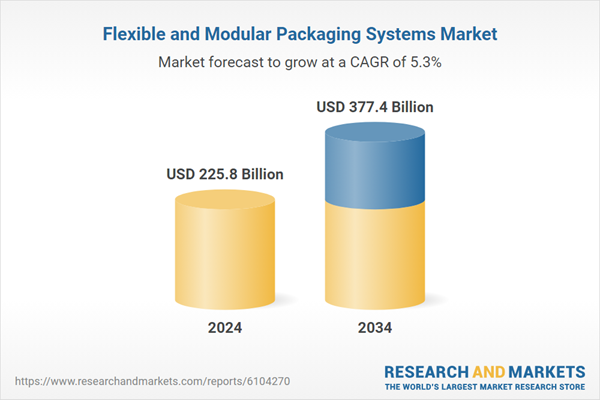Streamlining operations to quickly respond to shifting consumer preferences and shorter product life cycles has become a vital competitive edge. Small batch production capabilities, combined with seamless process operation, offer enhanced efficiency and agility. Increased environmental awareness, supportive research and development policies, and emphasis on social governance are pushing companies toward sustainable packaging solutions.
These eco-friendly initiatives not only enhance a company’s brand image but also open doors to new market segments that prioritize sustainability, ultimately driving increased customer loyalty and long-term profitability. Embracing green practices allows businesses to reduce operational costs through efficient resource use and waste minimization, creating a win-win scenario where environmental responsibility aligns with stronger financial performance.
The semi-automatic segment held a 37.3% share in 2024 and is projected to grow at a CAGR of 6.1% between 2025 and 2034. Semi-automatic packaging systems continue to be favored for their cost-effectiveness and suitability for small to medium-sized operations. These systems provide a balanced combination of manual effort and automation, helping businesses reduce capital expenditures while maintaining operational flexibility.
Direct distribution channels accounted for a 56.9% share in 2024. Manufacturers prefer direct sales because this approach fosters close relationships with customers, allowing for tailored solutions and comprehensive after-sales support, including maintenance and technical assistance. Direct engagement provides valuable insights into customer production needs, enabling suppliers to offer customized system designs, training, and service contracts.
U.S. Flexible and Modular Packaging Systems Market was valued at USD 31.9 billion in 2024 and is expected to grow at a CAGR of 5.9% through 2034. The country’s stronghold in the global market is supported by advancements in automation technology and growing demand from sectors like packaged foods, pharmaceuticals, and personal care. With a well-established packaging machinery industry and a robust consumer base, North America is recognized as a leader in consumer goods manufacturing. The implementation of interstate regulations concerning safety, hygiene, and sustainability is encouraging companies to upgrade outdated equipment to more efficient, streamlined systems.
Key companies in the Global Flexible and Modular Packaging Systems Market include Barry-Wehmiller Companies, Coesia Group, Fuji Machinery Co., Ltd., Haver & Boecker, IMA Group, Ishida Co., Ltd., KHS GmbH, Marchesini Group, Multivac Group, ProMach Inc., Serac Group, Sidel Group, SIG Combibloc Group, Syntegon Technology (Bosch Packaging), and Tetra Pak. To strengthen their market presence, companies in the flexible and modular packaging systems sector focus on several strategic initiatives. They invest heavily in research and development to innovate advanced, adaptable packaging solutions that meet evolving consumer demands.
Strategic partnerships and collaborations with technology providers enhance their automation capabilities, while acquisitions help expand product portfolios and geographic reach. Emphasizing sustainability, firms are developing eco-friendly systems that comply with global environmental regulations, which in turn attracts customers to prioritize green packaging.
Comprehensive Market Analysis and Forecast
- Industry trends, key growth drivers, challenges, future opportunities, and regulatory landscape
- Competitive landscape with Porter’s Five Forces and PESTEL analysis
- Market size, segmentation, and regional forecasts
- In-depth company profiles, business strategies, financial insights, and SWOT analysis
This product will be delivered within 2-4 business days.
Table of Contents
COMPANIES MENTIONED
The companies featured in this flexible and modular packaging systems market report include:- Barry-Wehmiller Companies
- Coesia Group
- Fuji Machinery Co., Ltd.
- Haver & Boecker
- IMA Group
- Ishida Co., Ltd.
- KHS GmbH
- Marchesini Group
- Multivac Group
- ProMach Inc.
- Serac Group
- Sidel Group
- SIG Combibloc Group
- Syntegon Technology (Bosch Packaging)
- Tetra Pak
Table Information
| Report Attribute | Details |
|---|---|
| No. of Pages | 260 |
| Published | June 2025 |
| Forecast Period | 2024 - 2034 |
| Estimated Market Value ( USD | $ 225.8 Billion |
| Forecasted Market Value ( USD | $ 377.4 Billion |
| Compound Annual Growth Rate | 5.3% |
| Regions Covered | Global |
| No. of Companies Mentioned | 16 |









